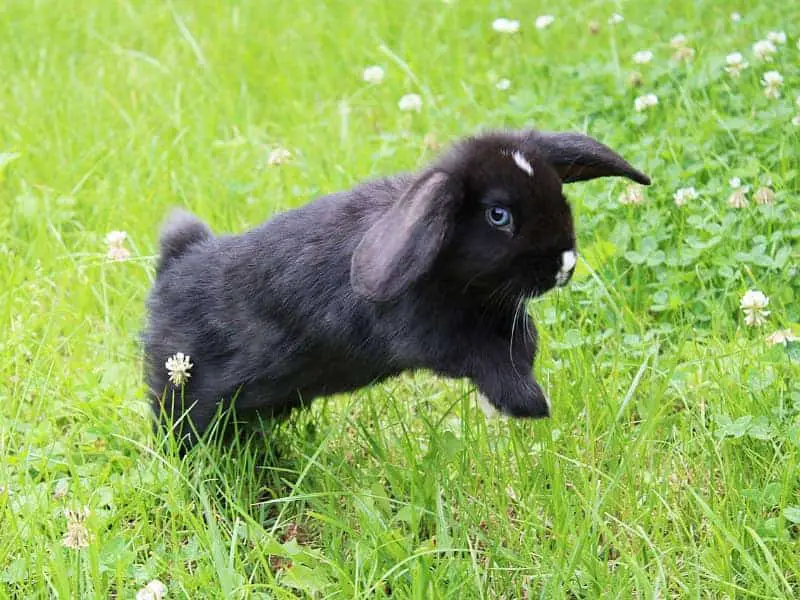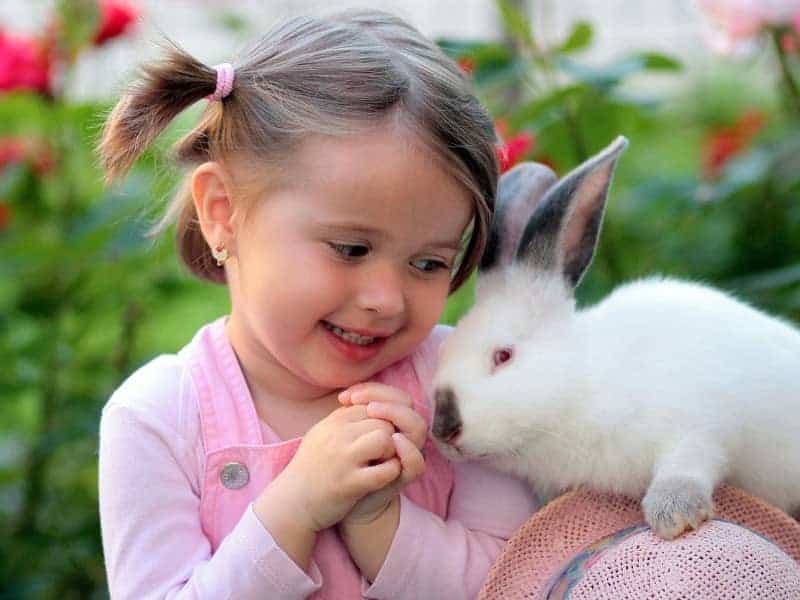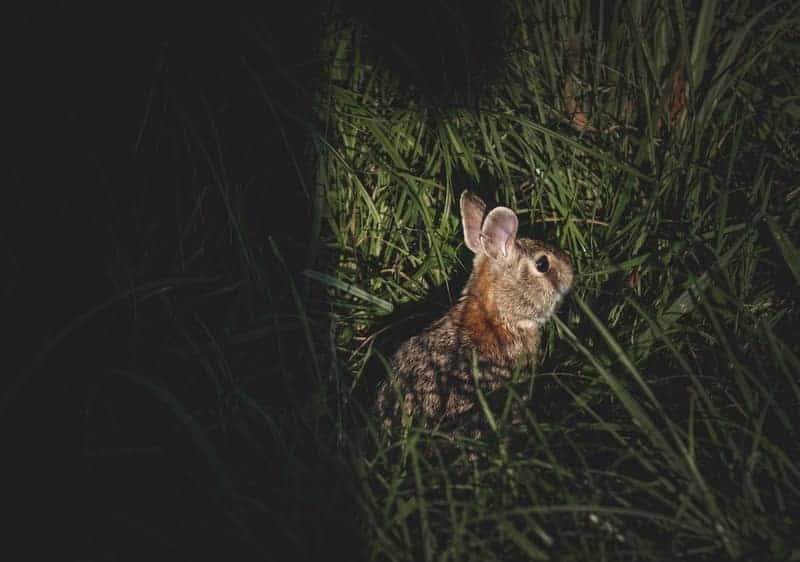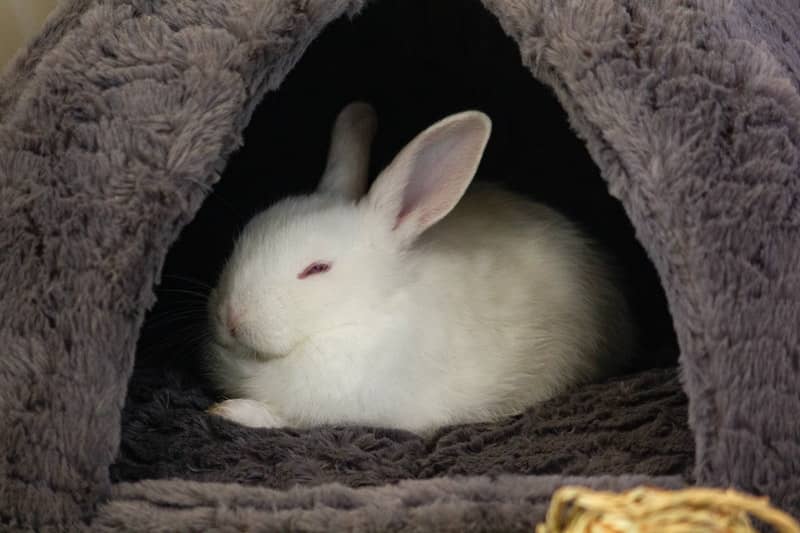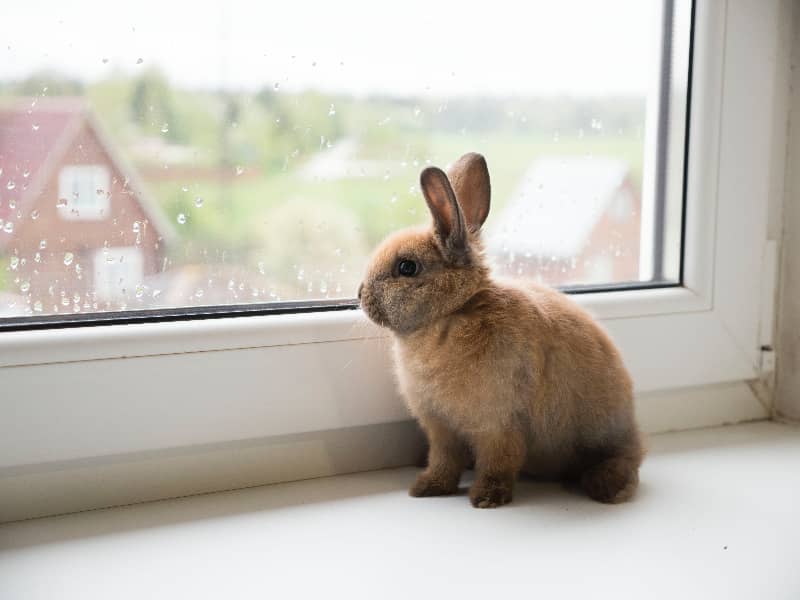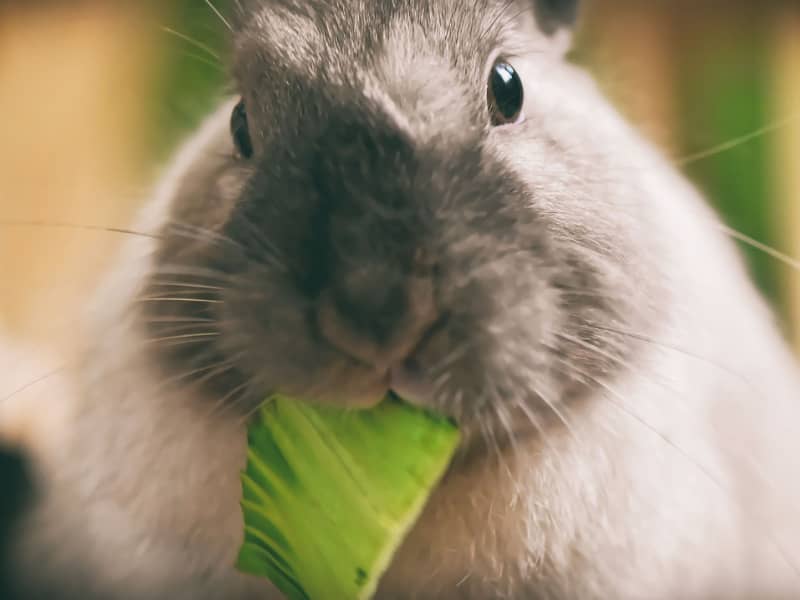
Can rabbits see colors?
Although rabbits have similar eyes to humans, they perceive their surroundings in different shades of color. The question of whether rabbits can see colors is therefore very justified. You can find out why this is the case and what advantages rabbits' eyes have over humans here.
Are rabbits colorblind?
Rabbits are not colorblind, but they can only see a limited range of colors. This is due to the fact that their eyes lack certain receptors. Like the human eye, the rabbit's eye is equipped with cones and rods. The cones ensure that colors are perceived. The so-called receptors are located in these cones.
These receptors are responsible for recognizing the three primary colors red, green and blue. This is at least the case in humans, but rabbits lack the receptors for the perception of red tones. This is the reason why rabbits can only perceive their surroundings in shades of green and blue. Instead, it has other abilities with its eyes that we can only envy.
Fewer colors, but excellent visibility at dusk
Although rabbits cannot see all colors, this is not important for their lives. However, their vision at dusk is outstanding and this is essential for rabbits. This is the main activity time for the animal and is therefore important. As already mentioned, the cones ensure that the different colors are perceived.
However, rabbits have more rods than cones, and it is precisely these rods that are important at dusk. This is because they are responsible for perceiving brightness in its different nuances. This means that many rods mean more accurate/better vision at dusk. However, the situation is different in complete darkness.
Here, even the rods are no longer of any help and, as with us humans, rabbits see little or nothing. Rabbits also see less well in strong sunlight. The reason for this is the pupil in the rabbit's eye. They are not as flexible as in humans and cannot contract as much. This is why rabbits are quickly dazzled by strong sunlight.
See rabbit colors, almost perfect all-round visibility
Due to the fact that rabbit eyes are located on the right and left side of the head, rabbits have a very wide viewing angle. If there are no ears or hair in the way, rabbits can have a viewing angle of 170° per eye. This is ideal for a flight animal, but in rabbits only wild rabbits have such a wide angle of vision, as it is essential for their survival.
Domestic rabbits have often been bred so that the face is narrower and the eyes do not protrude so much from the head. And as already mentioned, long hair or ears that hang down can significantly reduce the field of vision. Despite the wide field of vision that rabbits have, there is a small area where the animals cannot see anything.
This area is only about 10° in size and is located right in front of her face between her eyes. This area is not recognized and is only perceived by smell and touch.
No color vision, but farsightedness
As rabbits are flight animals, it is vital for their survival to recognize their enemies as early as possible. This is why farsightedness is much more important in rabbits than recognizing things that are in their immediate vicinity. If you take a closer look at the rabbit's eye, it is not surprising, because they have a corneal curvature that makes them farsighted.
This curvature ensures that objects at close range are only perceived blurred. As the owner of your rabbit, you will not be recognized by your pet's sense of sight. The animals recognize you because they can smell you and your voice is familiar to them. It is also assumed that the way a person moves is associated with a certain person.
Not colorblind, no spatial vision and no colors, poor rabbit?
No, definitely not, because as already mentioned, other sensory organs can compensate for a lot in rabbits. The fact that there is no spatial vision is due to the fact that the visual range in which a 3D perspective is visible must be covered by both eyes. However, as the animals' eyes only have a small overlap of around 30°, this is not possible.
This is the reason why rabbits have problems estimating the speed and distance of an approaching danger. However, they have developed a solution to get around this problem. This solution is called parallax, where the rabbits wiggle their heads to increase the overlap between the two eyes.
This allows them to better estimate the distance and perceive the movement made by the enemy or object. Not as good as humans, but better than other flight animals.
Author

-
Garden animal - A life with nature
Welcome to my animal blog! My name is Dirk and I am happy to take you on my journey through the fascinating world of animals and gardening.
Born 54 years ago, I have had an insatiable curiosity for the animal world around me since childhood. Although I have moved professionally in other industries, my true passion has always been animals and nature. It is remarkable how a small garden has become such an important part of my life.
Many of my fondest memories are associated with the animals that share our home. Whether it's the curious squirrels that scurry across the trees in the morning, the colorful variety of birds that visit our feeders, or the busy bees and butterflies that pollinate our flowers, every moment with them is invaluable to me.
This blog is my contribution to share my experiences, discoveries and insights with like-minded people. Here I will share stories of unforgettable encounters with animals, give tips on gardening and creating wildlife-friendly habitats, and take you on my journeys through nature.
Thank you so much for being here!
Cordial,
Dirk aka garden animal
Last posts
- 27. February 2024PetsVeganes Hundefutter – Grün und Gesund?
- 18. January 2024ChickensOregano für Hühner
- November 27, 2023HamsterDiurnal hamsters
- November 24, 2023HamsterHamster hammock

